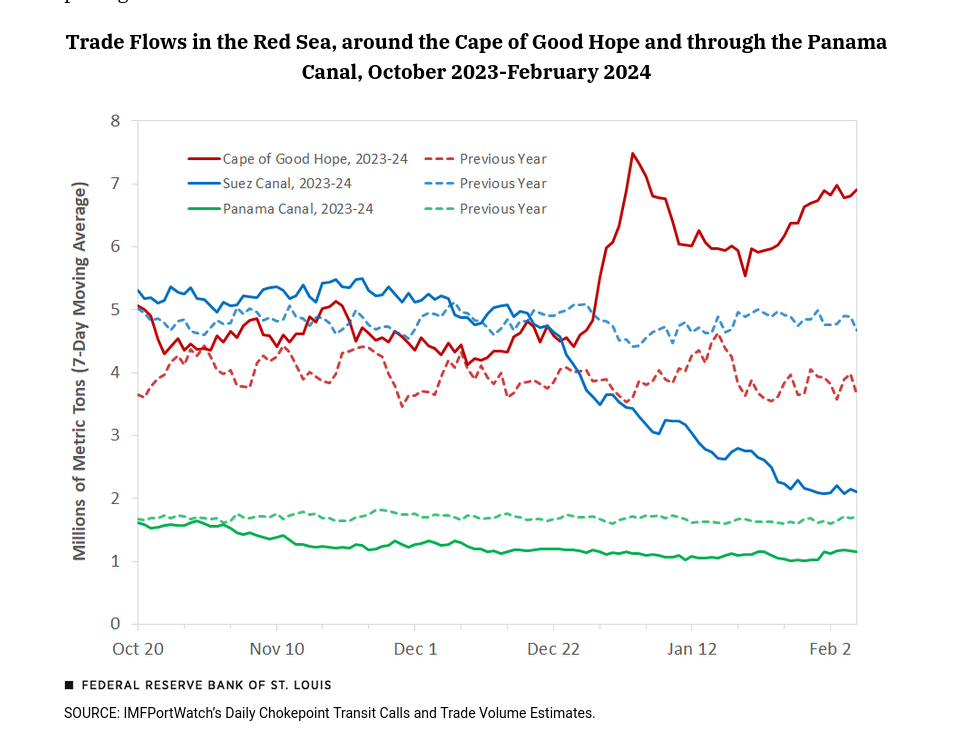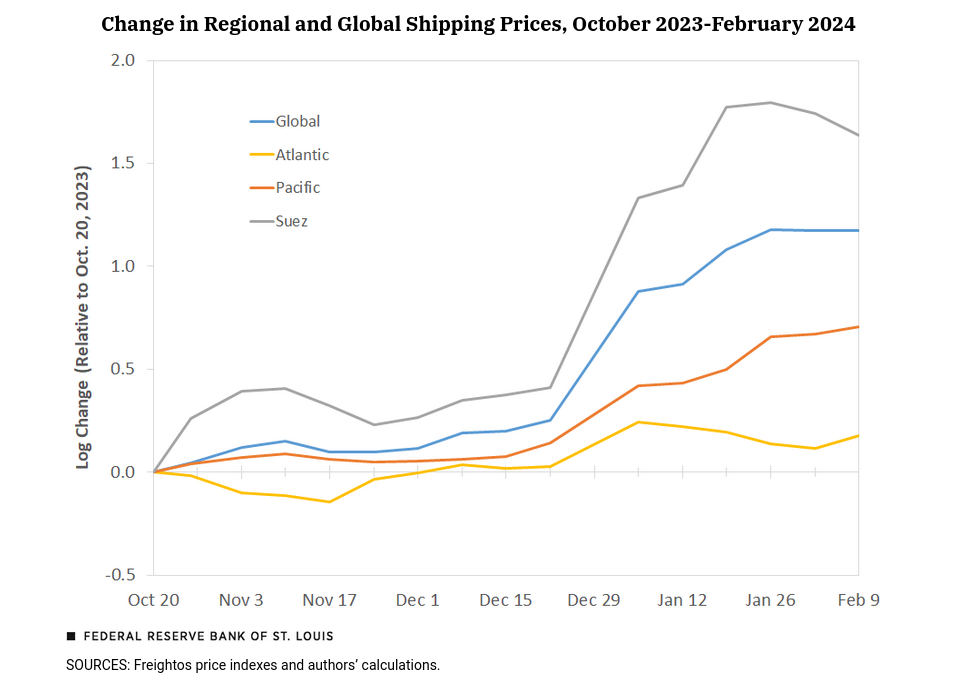March 4, 2024
Shipping costs
Disruptions in shipping have global impacts.
The Panama Canal and Suez Canal have both seen declines in traffic, made up through alternative and more expensive routes.

The declines in traffic are for different reasons (climate change vs war) and Panama's decline is a less steep slope, but the impact is pushing prices in the same direction:

The price increase and the global economy have had an impact on total trade flows as well with total metric tonnes down two million (from 13M) since mid-December.
On the whole, the impact on trade is large. And, we seem to not be seeing the end of global geopolitical instability or climate change.
IEA: emissions still growing
Emissions increased by 410 million tonnes, or 1.1%, in 2023 – compared with a rise of 490 million tonnes the year before – taking them to a record level of 37.4 billion tonnes.
- shortfall in hydro electricity because of droughts in Asia, North America, and elsewhere means more reliance on fossil fuels.
Advanced economies saw a record fall in their CO2 emissions in 2023 even as their GDP grew, but only because of the rather "easy" transition from coal to natural gas. That simple transition meant their emissions dropped to a 50-year low.
However, this transition has now happened. So, moving down more is more difficult now. And, the emission reduction is probably just a result of us under-counting emissions along natural gas pipelines and production sites.
It might turn out that this "decline" in emissions is corrected in the next few years with new monitoring of "fugitive" emissions coming online.
My point is there is nothing to celebrate here. We need to be declining emission to meet targets set-out in the UN/IPCC/COP agreements.
Energy efficiency is lagging behind, however. Our latest assessment shows an energy intensity improvement of around 1% in 2023, four times lower than the COP28 pledge to double the long-run rate of energy intensity improvement by 2030.